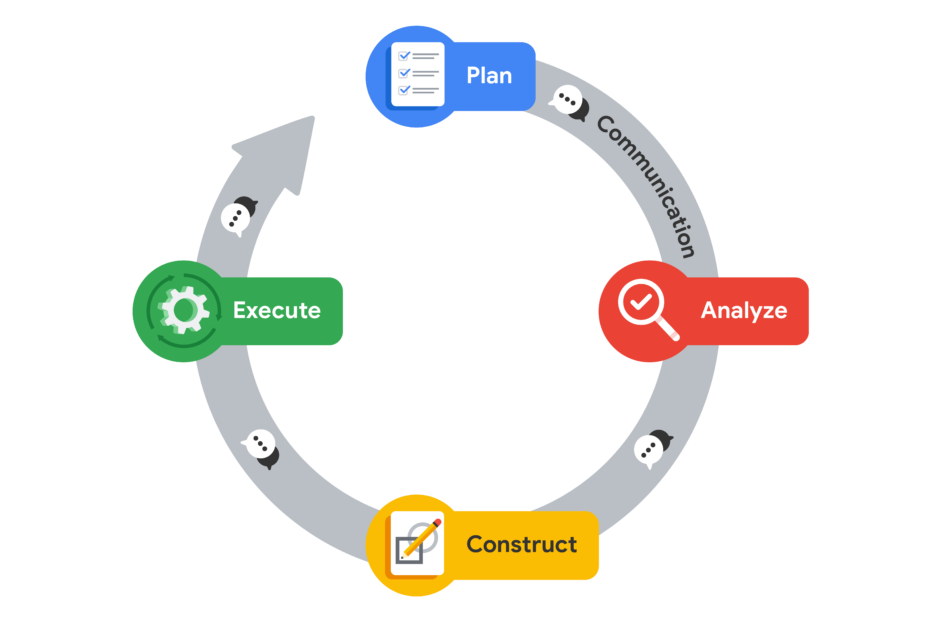Data analysts are the explorers of the modern world, charting paths through the dense forests of information. But before embarking on any data adventure, a crucial first step is crafting a compelling project proposal. This is where the PACE strategy comes in, it provides a clear foundation and structure for data analysis projects.
The PACE model

P is for Plan
- Define the Problem: Start with a clear understanding of the business problem you’re tackling. What are the key questions that need answers? What metrics will indicate success?
- Scope the Data Landscape: Identify available data sources, assess their quality and relevance, and estimate the effort needed for cleaning and preparation.
- Chart Your Course: Outline the methodology you’ll use to analyze the data. Will it be statistical modeling, machine learning, or a combination?
- Set the Milestones: Divide the project into achievable phases with clear timelines and deliverables.
A is for Analyze
- Dive Deep: Explore the data, uncovering patterns, trends, and potential anomalies. Use data visualization tools to tell the story hidden within the numbers.
- Cleanse and Refine: Address data inconsistencies, missing values, and outliers. Ensure your data is ready for analysis without compromising its integrity.
- Test Your Hypotheses: Put your initial assumptions to the test. Use statistical tests and models to validate or refute your predictions.
C is for Construct
- Build Your Insights: Translate your analysis into actionable insights that address the business problem. Use storytelling and clear communication to make your findings accessible to stakeholders.
- Model the Future: If applicable, develop predictive models or forecasting techniques to anticipate future trends and inform strategic decision-making.
- Create the Deliverables: Prepare your final report, presentations, or dashboards that effectively communicate your findings and recommendations.
E is for Execute
- Present and Persuade: Clearly articulate your findings to stakeholders, addressing potential concerns and answering questions with confidence.
- Monitor and Adapt: Implement your recommendations and track their impact. Be prepared to adapt your approach based on new data and feedback.
- Share the Knowledge: Document your methodology and findings for future reference and to facilitate knowledge transfer within the organization.
Conclusion
By following the PACE strategy, you can ensure your data analysis project proposals are clear, well-structured, and persuasive. You’ll be equipped to navigate the data jungle with confidence, leaving a trail of valuable insights for your organization to follow.
Note: Remember, the PACE strategy is a flexible framework, not a rigid formula. Adapt it to fit the specific needs of your project and your audience.
That’s it for today folks. Meet you later in another post 🙂
More reads:- Start web server from any directory using python

